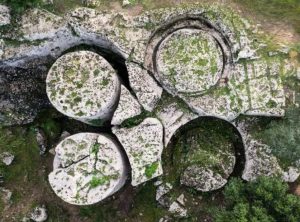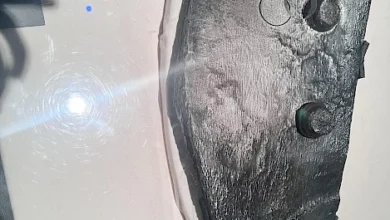Cave di Cusa – The mystery of the ancient stone columns of Sicily

 Cave di Cusa, also known as Rocche di Cusa, is a fascinating archaeological site in Sicily, Italy. It is an ancient stone quarry that supplied the building materials for the magnificent temples of Selinunte, a Greek city that was located 13 km southwest from the quarry.
Cave di Cusa, also known as Rocche di Cusa, is a fascinating archaeological site in Sicily, Italy. It is an ancient stone quarry that supplied the building materials for the magnificent temples of Selinunte, a Greek city that was located 13 km southwest from the quarry.
Selinunte was one of the most important and prosperous colonies of Magna Graecia, the name given to the coastal areas of Southern Italy and Sicily that were colonized by the Greeks from the 8th to the 3rd century BC.
At that time, this region was inhabited mainly by Greeks and the stones from this quarry were used in particular for the construction of a Greek temple in the nearby city of Selinunte.
The quarry was active for about 150 years, from the first half of the 6th century BC to 409 BC, when Selinunte was attacked and destroyed by the Carthaginians led by Hannibal Mago. The workers and slaves who were carving the stones at Cave di Cusa fled in panic, leaving behind their tools and unfinished blocks.

The site was never used again and remained frozen in time for over two millennia.
Today, visitors can admire the impressive remains of the quarrying process, which reveal the techniques and skills of the ancient Greek stonecutters. The site is 1.8 km long and covers an area of about 12 hectares. It is divided into several sectors, each corresponding to a different phase of production.
Archaeologists regularly excavate here, and this place is also very popular among tourists, as massive stone blocks in various stages of processing are lying around here. But the most interesting are the remains of the columns.
Fans of historical secrets and mysteries have been arguing about these columns for many years, because some of them look like they were carved out of the rock with the help of some huge and precise tool like a drill.
It is believed that no such drilling machines existed in those ancient times, and that if it had been done by hand, it would have been an unusually costly and difficult production.

Also, some researchers claim that there are clearly visible traces of machining on the sides of these columns.
Official archeology believes that the columns were cut by hand using ordinary hammers and chisels, but critics are sure that “it is impossible to maintain such an even geometry with such rough tools.”
Often they rightly point to those places with blanks of columns, where a very narrow groove has been cut between the stone cylinder and the rock. It would be extremely inconvenient to make such a groove with a hammer and chisel.

In addition, during the manual manufacture of stone columns in ancient times, a rectangular stone block was usually first separated, and only then its processing began. Otherwise, it’s just extremely inconvenient to work.
The most remarkable feature of Cave di Cusa is that it allows us to see how the ancient Greeks conceived and constructed their temples. The blocks were not standardized, but rather customized according to the dimensions and proportions of each temple.
The workers followed precise mathematical and geometric rules to ensure harmony and balance in their architecture. They also marked each block with symbols and numbers to indicate its position and orientation in the temple.
How they managed to do this so long ago remains a mystery to this day.
Greetings, explorer! We thank our supporters from the bottom of our hearts for their generous donations that keep anomalien.com alive. If you’d like to join the cause and help us continue to deliver amazing articles, please consider making a donation. Let’s keep the 👽 smiling!Follow us on Instagram, Twitter and Telegram for interesting and mysterious bonus content!




